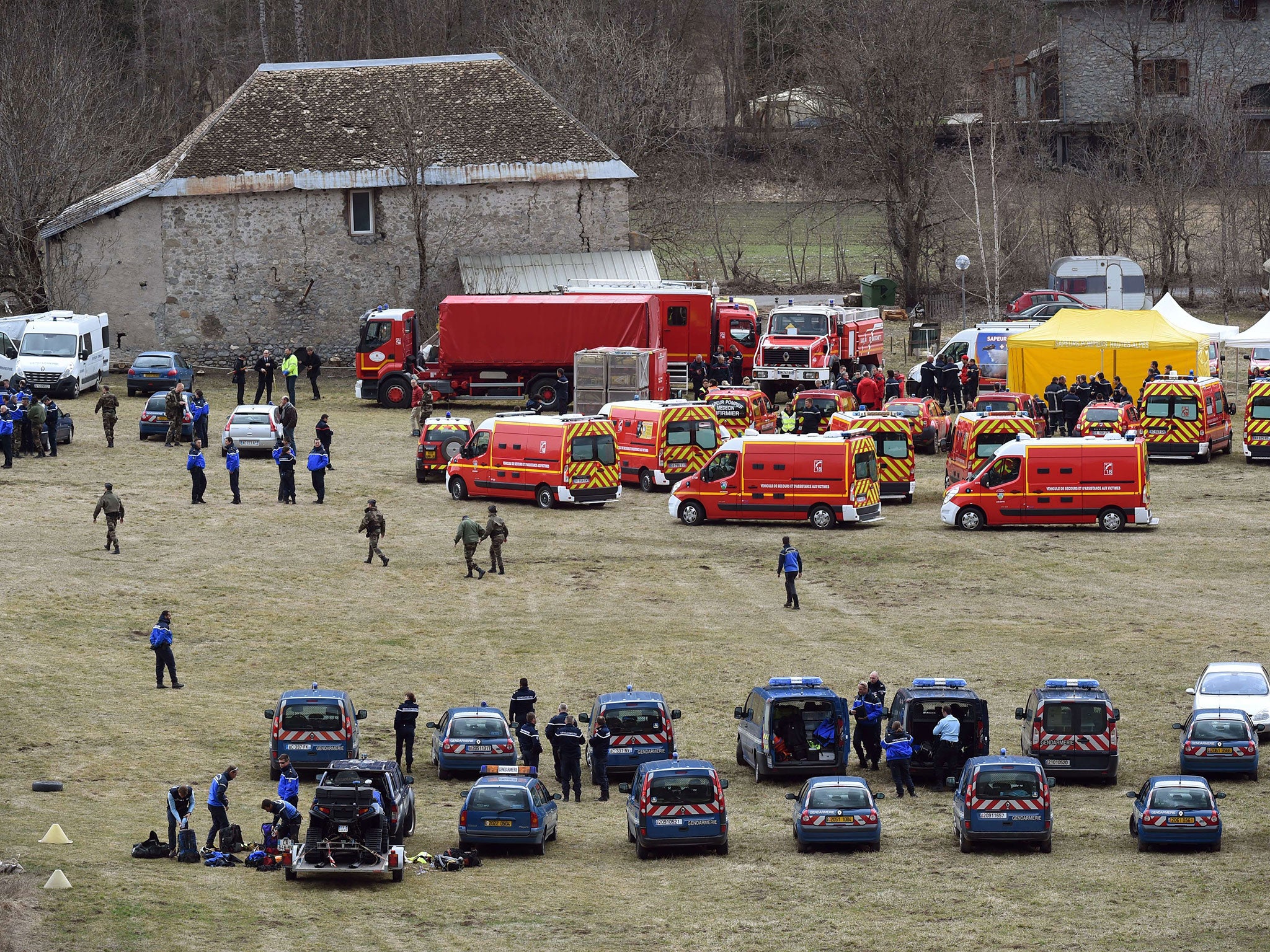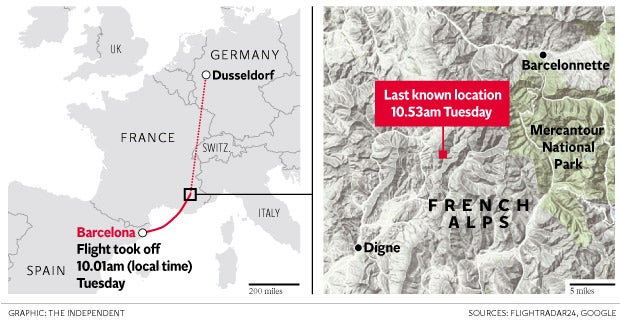Germanwings crash: Chain of problems may have contributed to disaster
Nothing will be certain until the black box recorders are analysed

Your support helps us to tell the story
From reproductive rights to climate change to Big Tech, The Independent is on the ground when the story is developing. Whether it's investigating the financials of Elon Musk's pro-Trump PAC or producing our latest documentary, 'The A Word', which shines a light on the American women fighting for reproductive rights, we know how important it is to parse out the facts from the messaging.
At such a critical moment in US history, we need reporters on the ground. Your donation allows us to keep sending journalists to speak to both sides of the story.
The Independent is trusted by Americans across the entire political spectrum. And unlike many other quality news outlets, we choose not to lock Americans out of our reporting and analysis with paywalls. We believe quality journalism should be available to everyone, paid for by those who can afford it.
Your support makes all the difference.Flight 4U9525 from Barcelona to Düsseldorf had reached a cruising altitude of 38,000ft at 10.45am with 150 passengers and crew onboard. The Airbus A320 began an unexplained descent before dropping off radar screens at 10.53am. No distress call was issued and nobody on the Germanwings flight is thought to have survived the crash.
Tonight, former air accident investigators were quick to focus on that time window, with the aircraft’s angle of attack sensors among the main areas of attention. Nothing will be certain until the black box recorders are analysed, but these sophisticated sensors will be vital in the investigation as they assist the crew in determining an aircraft’s true speed. Crucially, in the event of a stall they can automatically pitch an aircraft’s nose downwards, unless the crew overrides them.
Much has already been made of the fact that the sensors fitted to this type of Airbus were covered by a wider Emergency Airworthiness Directive issued in December by the European Aviation Safety Agency (EASA). This came after they were thought to have contributed to a Lufthansa aircraft briefly falling into an uncontrollable dive over Spain. In that case pilots managed to regain control at 28,000ft.
A spokesperson for Airbus told The Independent that there was “nothing at all to indicate” the fault raised by the EASA directive and the Germanwings accident were “linked”. But James Healy-Pratt, a specialist aviation lawyer for Stewarts Law, said the sensors would “almost certainly” be part of the French investigation.
He said: “It is far too early to speculate, but French investigators will almost certainly be looking at the Lufthansa incident and the EASA directive will be looked at very closely. Frozen or faulty sensors are a major ongoing issue in air safety.” The crashed Airbus A320 is a generally safe aircraft type and a bird strike or simultaneous engine failure is thought to be very unlikely, according to Phil Giles, formerly with the UK’s Air Accidents Investigation Branch.

He said: “What’s remarkable about this incident is the measure of control it appears there was as the plane descended from its cruising altitude to impact. From the data available it appears it flew at a steady speed of around 400 knots and its descent of 4,000 feet per minute is not extreme and may not have even been picked up on by all the passengers if the airplane remained pressurised.”

According to Mr Giles, in a “loss-of-control situation” such as this the rate of descent normally “rockets” while the speed “really ramps up” before impact. This does not appear to have been the case with Flight 4U9525 and investigators will now be looking at whether the automatic pilot intervened.
He added: “Either way, if the pilots were conscious they should have had plenty of time to tell people there was a problem. Obviously they didn’t though, and what we know in tragedies like this is that we often see a crash happen because of a chain of unforeseen problems, not just one thing going wrong.”
Join our commenting forum
Join thought-provoking conversations, follow other Independent readers and see their replies
Comments